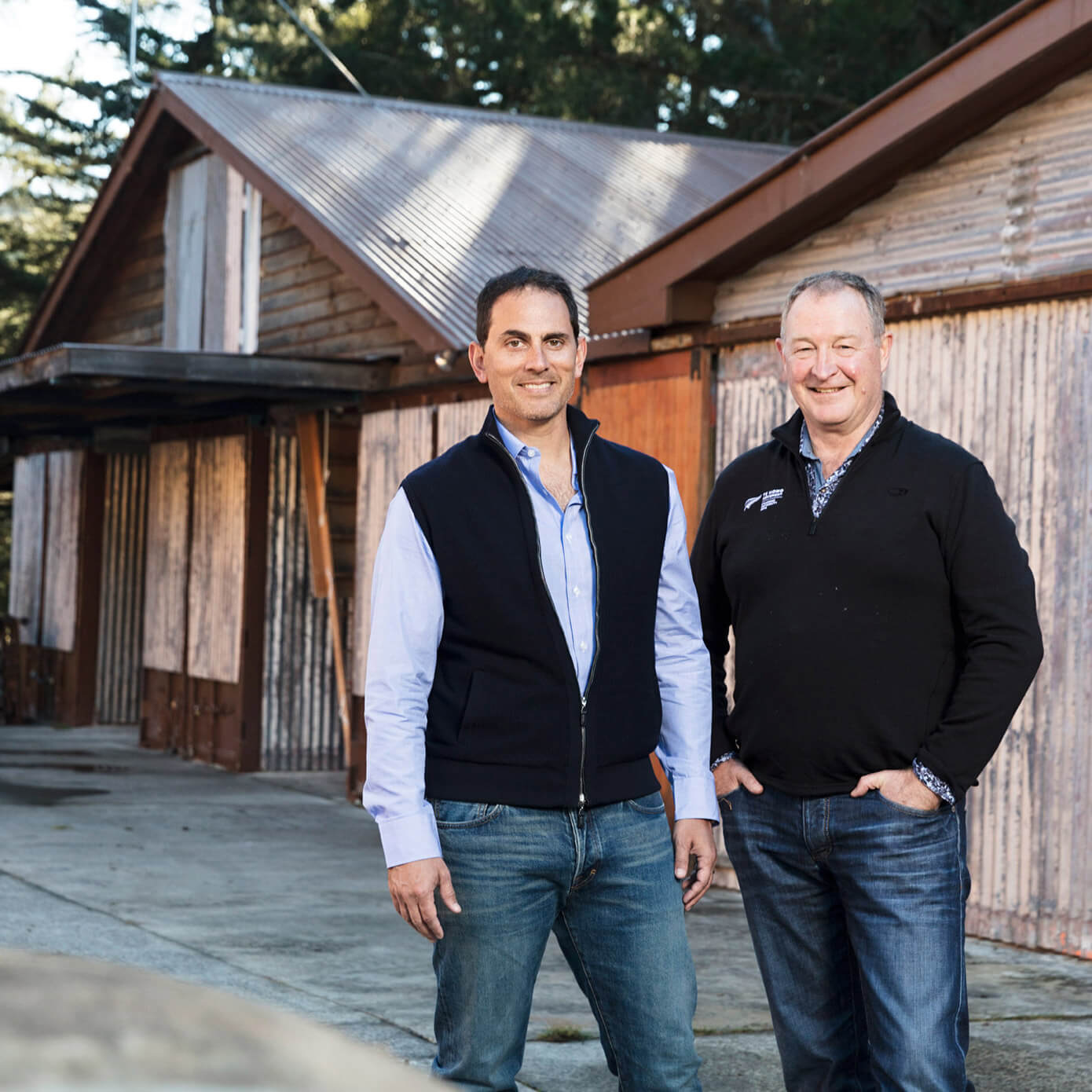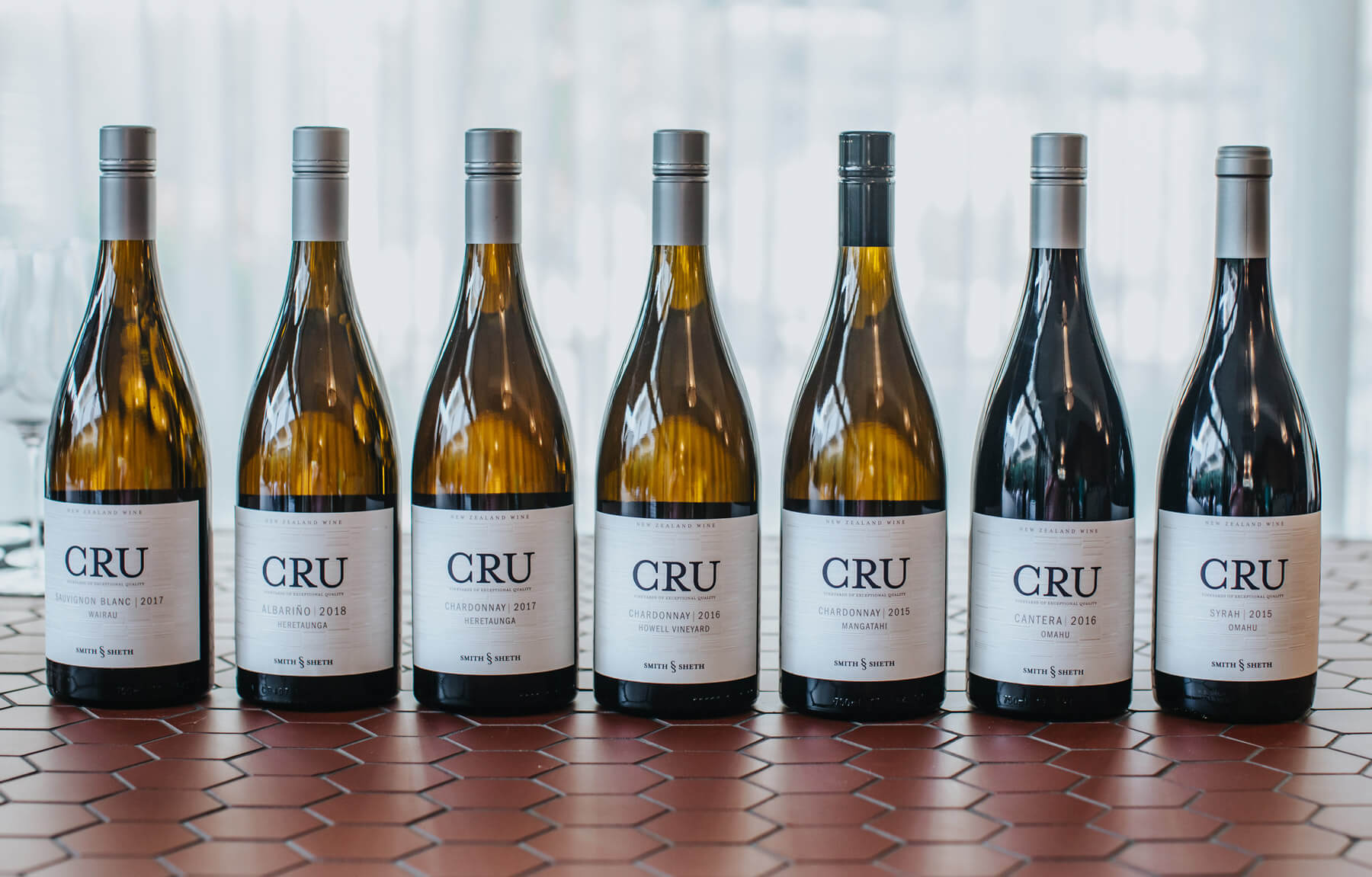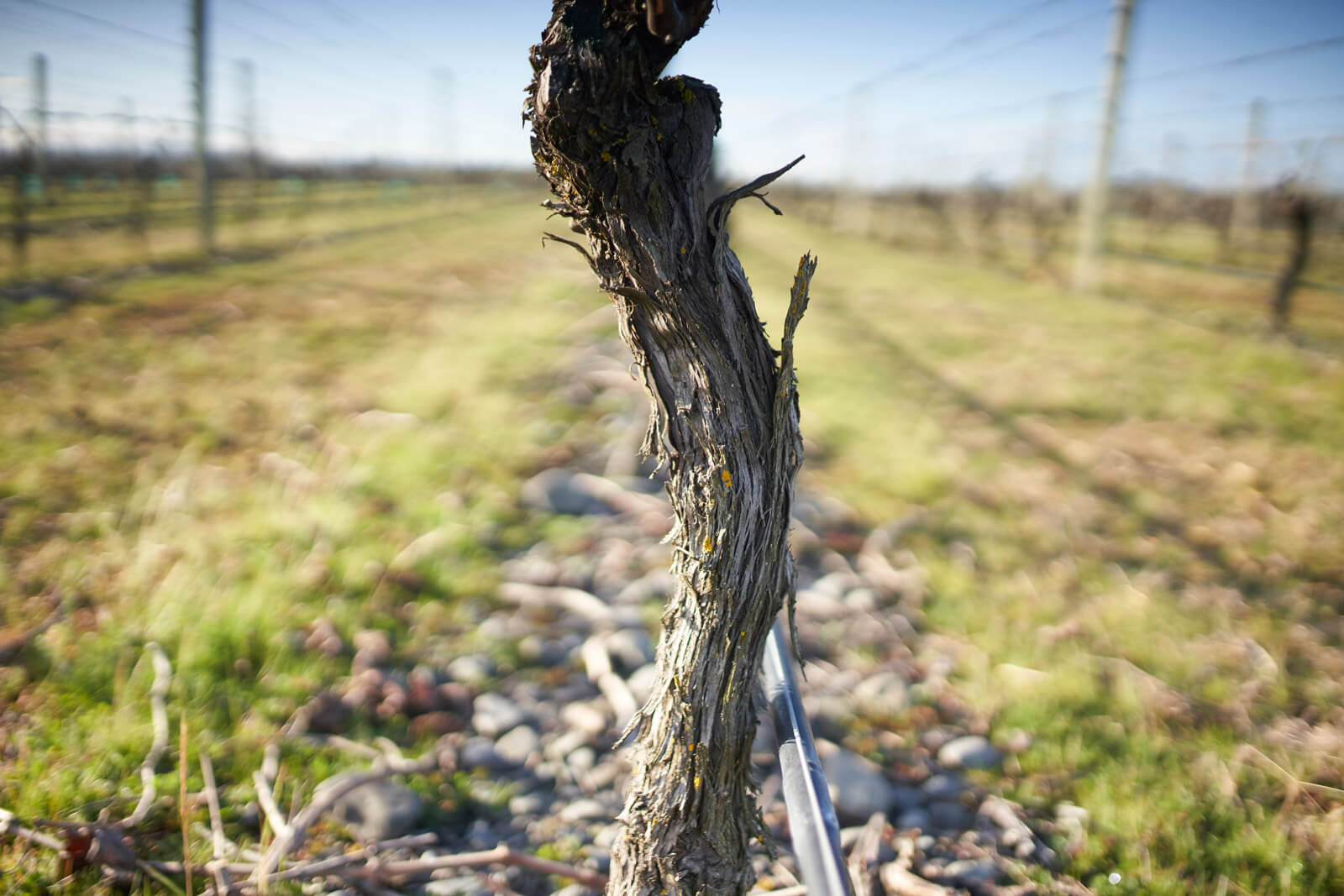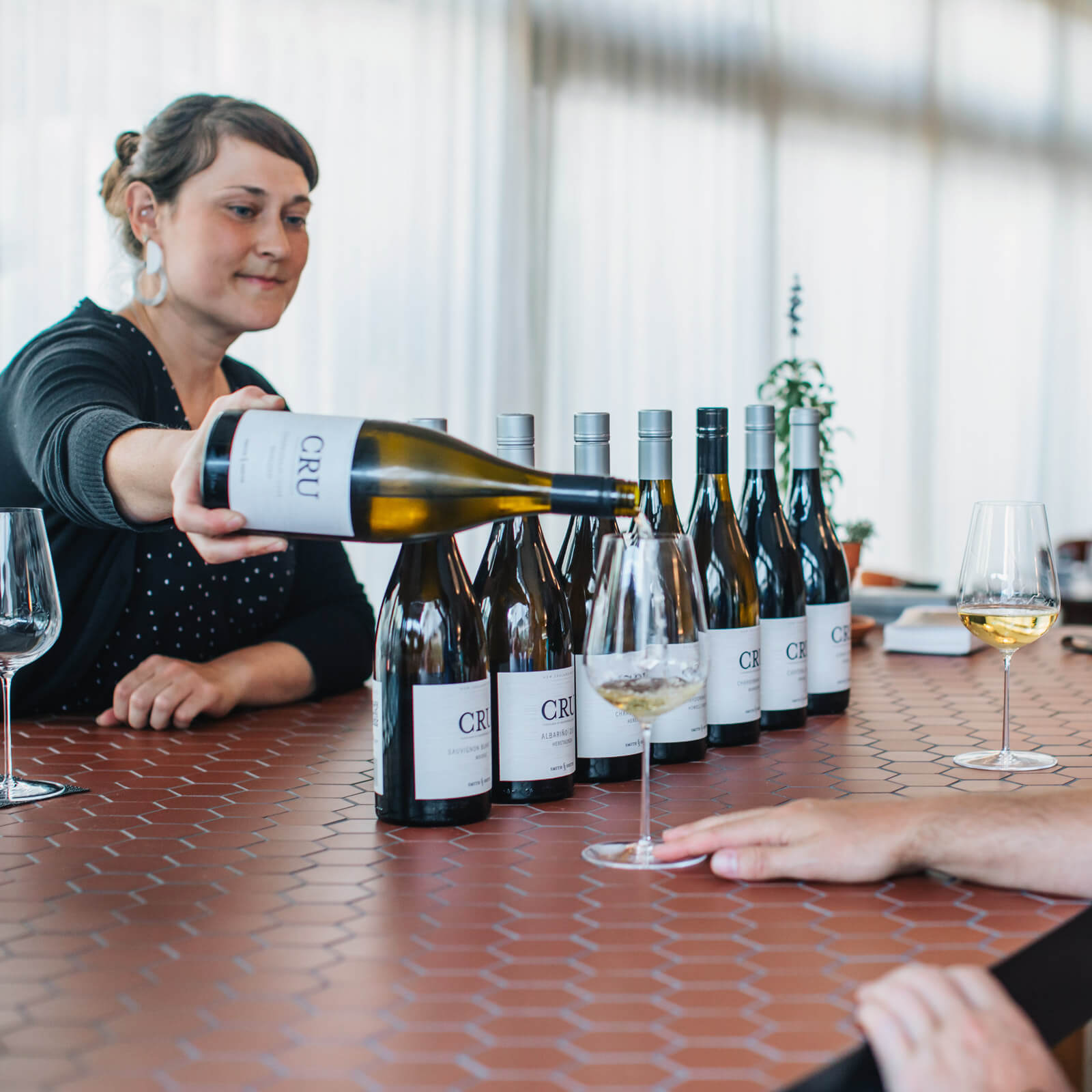Smith & Sheth Cru: Rich, Exciting Wines From New Zealand With Alluring Aromas
by Ken Gargett
I first met Steve Smith around the turn of the century. I was visiting the vineyards of New Zealand (although, like many of those visits, it was probably to legitimize a fly-fishing trip to chase the Kiwis’ magnificent brown trout) and someone had arranged for us to catch up. Smith was newly appointed at a winery of which I had never heard – nor had anyone else back then.
I remember Smith as an enthusiastic winemaker (all winemakers are enthusiastic, but Steve took it to Olympian levels) standing in the middle of a paddock telling me of the glories to come. A rather rocky and uninspiring sight it was at the time, and I thought weeds might have had a better chance.
But Smith had some very early wines from grapes purchased from growers, I believe, back at what would eventually become one of his two wineries. He wanted to show me a Syrah (New Zealand had but a handful of vines of this variety in those days) from almost inconceivably young vines, which he had and which was showing 15 percent alcohol.
That was almost unheard of and unimaginable for a cool region like Hawkes Bay back then.
We went back to the laboratory (I might be doing Steve a disservice, but I think it was a caravan in those days), and he produced tubes of the most inky dark purple liquid that coated the tongue. The floral and spice aromas were literally overwhelming and the intensity on the palate so unexpected.
Suddenly, I saw why Smith was so excited. It was my first look at Gimblett Gravels Syrah. Production was ridiculously tiny back then – it’s still very small – but the potential was thrilling.
This was the very early days of the stunning Craggy Range winery in the Gimblett Gravels region of Hawkes Bay.
A year or two later, I was back (and have been a few times subsequently, sometimes not even bothering to pack a fly rod) for the opening; it was an event that is still spoken of in reverential tones.
While we fortunate and assembled guests sat at the base of the mountain behind the winery, sipping Craggy Range in front of an outdoor stage (the only sour note was that it was, despite being mid-summer, near Antarctic conditions), international acts such as Dame Kiri te Kanawa performed.
The highlight was Sir Edmund Hillary sitting on stage while the Auckland Philharmonic Orchestra (Craggy Range does not do things by halves) played softly behind him as he told the story of the final hours of his historic ascent of Mount Everest.
The audience made not the slightest murmur as we listened, spellbound, not a dry eye to be found.
Smith had a background at Villa Maria and Peregrine and was one of New Zealand’s earliest Masters of Wine. He had joined forces with a Brisbane (my hometown) local, Terry Peabody, a most successful businessman, who was keen to set up a winery that would last the test of time.
Peabody wanted something for his children and grandchildren (and was in the fortunate position of being able to afford the very best). After a search of epic proportions, the pair had decided on headquarters in Hawkes Bay on New Zealand’s North Island and vineyards in all the top regions of that country. And that was the genesis of Craggy Range.
In all honesty, I’d been a little intimidated on my way to meet Smith – his illustrious achievements including being one of the first Master of Wine in New Zealand impressed me – but I need not have worried. Our meeting that afternoon stretched into dinner and subsequently many more encounters.
From day one, we have argued about rugby (I rarely win) and cricket (which I never lose) and much more. Back in 2003, with the Rugby World Cup in full swing in Australia, we made a pact that, as our respective nations were meeting in the semifinal, winner to play England in the final, the loser would swallow his pride and we’d have a good lunch before the game and not offload our tickets (the idea of an England vs. New Zealand final in anything is my idea of purgatory).
Somehow, Australia knocked off the All Blacks in the semi. Steve was as good as his word and flew over for lunch. It was much more enjoyable than the game itself.
I have not heard much from Smith in the last few years. He had moved on from Craggy Range and was busy setting up his own thing. But now . . .
Smith & Sheth Cru: finally, we have liftoff!
Smith has combined with Brian Sheth to create a new operation, Smith & Sheth Cru. I have not met Sheth, but he is described as a Texan who is “an investor and wildlife conservationist with a love for New Zealand.” As someone who spent time in Washington, DC in a past life, if I ever find out he is a Dallas Cowboys fan I might have to re-write this entire thing.

Brian Sheth and Steve Smith
In all honesty, in these early days for Cru, unless you are based in New Zealand, or for some of the releases Australia, they will be hard to find, though I understand that the winery can ship wines internationally and presumably could advise of costs in those circumstances.
I have every confidence that it will not take long before Smith & Sheth Cru takes its place among the world’s exciting emerging wineries.
One thing that always surprises me is that many wine lovers expect winemakers to try and replicate what they have achieved at their last stop. John Duval was the classic example.
Duval made Penfolds Grange for many years before heading out on his own. Everyone assumed he was going to try and replicate Grange and other Penfolds wines. Not so. Duval wanted to do his own thing and, as he once mentioned to me, he couldn’t make another Grange anyway. He had locked in all the suitable vineyards to long term contracts with Penfolds.
Smith is the same. Don’t expect Craggy Range Mark II. As he says, the “Heretaunga Syrah is definitely a different statement to what we did at Craggy, where the wines were bigger and denser. The whole idea here is Northern Rhone meets Gimblett Gravels with very open feel to the wine and more of a focus on the floral nature of Syrah and supple nature of the wine alongside the distinctive Gimblett Gravels black pepper, dark fruits feel. They are no less ripe than the bigger wines from the Gravels, just a different take on the idea.”
His Syrah sits alongside wines like Cabernet Franc and Pinot Noir from other regions. For the record, Heretaunga is Maori for Hawkes Bay.
And this, in a nutshell, sums up the new operation, which is, as it states, basically contemporary négociants. At this stage, they are sourcing all their wines from growers – Smith’s extensive experience around the nation not only gave him a unique insight to the best regions and the best vineyards to be found there, but also fabulous contacts and long-term relationships, allowing him access to the best grapes.
Smith talks of the New Zealand concept equivalent to terroir – tūrangawaewae. Good luck with that ever catching on. “Terroir” will have to do.
Smith & Sheth Cru wines
At this stage, the wines are extremely reasonably priced, mostly between NZ$50 and $60, though the Sauvignon Blanc is about half this (Smith knows that I am one of the heathens who thinks that there is not a Sauvignon Blanc vineyard on this planet that would not be better served as a carpark or quarry or nature reserve or anything else, and he kindly added a personal note to the information he sent, saying “even you will like this one” – it remains to be seen and I would not hold my breath).

Smith & Sheth Cru wines
The wines are split into the Single Vineyard Collection and the Appellation wines.
The Cantera is a blend of the Cabernets, Sauvignon and Franc, with Tempranillo, the famous grape of Rioja in Spain. The three varieties are co-fermented, and Smith was assisted by Warren Gibson from Trinity Hill in Hawkes Bay (Warren’s Homage Syrah is one of the great wines, not just of New Zealand but of the New World).

Gimblett Gravels vineyard, New Zealand
Other single-vineyard wines include a Syrah and Chardonnay from the Omahu Vineyard, a Chardonnay from the Mangatahi Vineyard, and a Chardonnay from the Howell Vineyard.

Smith & Sheth Cru wine tasting
The Appellation wines include Chardonnay, Syrah, Albarino, and Cabernet Franc from Heretaunga, Pinot Noir from Kawarau (in Central Otago – the Kawarau River featured as the setting for the Gates of Argonath, the Pillars of the Kings, in the Lord of the Rings films), and, finally, the Sauvignon Blanc Smith seems to think I’ll like from Wairau (I will confess that I love the Wairau River and have caught good trout and even salmon from it – if you’ll forgive the personal digression).
Tasting notes Cru Omahu Cantera 2017
As mentioned above, Cru Omahu Cantera 2017 is a blend of Cabernet Sauvignon, Cabernet Franc, and Tempranillo. Only 146 six packs of this wine were made. The grapes came from vineyards with stony riverbed soils in the Gimblett Gravels subregion of Hawkes Bay.

Smith & Sheth Cru Omahu Cantera
They were destemmed and co-fermented in open-top vessels and punched down twice daily during fermentation. The wine spent 19 months in barrel, most of which were new American oak, which is comparatively rare for this style, though much less so in Rioja – yet another connection, along with the Tempranillo, to the Spanish region.
The stunning aromas leaped from the bottle as soon as it was opened. Filled the room. Fabulous stuff. Just gorgeous. Inky black, cloves, spices, vanillin notes, florals, with soft, cuddly, supple tannins to finish. Great length and fine concentration with underlying power. A fine, layered style. Has many years ahead of it, though delicious today. 95.
Tasting notes Cru Heretaunga Syrah 2017
There are 686 six packs of Cru Heretaunga Syrah 2017, with grapes from 15-year-old Syrah vines (and, yes, that is reasonably old in New Zealand), again the stony riverbed soils. Destemmed grapes, indigenous yeasts, open top fermenters, and daily punching down. Fifteen months in barriques, 40 percent of which were new.

Smith & Sheth Cru Heretaunga Syrah
A wine with fineness and finesse. Alluring aromas. Has the dense chocolate, black olive, and floral notes of a top Hawkes Bay Syrah, but is more elegant than most. Excellent balance and length with juicy acidity. Very fine, supple tannins. This should age extremely well for the best part of a decade. 94.
For more please visit www.smithandsheth.com.
You may also enjoy:
Gimblett Gravels Annual Vintage Selection From Hawke’s Bay, New Zealand: Wine Highlights And Scores
New Zealand’s Craggy Range Winery And The Revelatory Le Sol Syrah: Tasting Notes Inside
Penfolds G3: Making Grange, Already One Of The World’s Greatest Wines, Even Better



Trackbacks & Pingbacks
[…] Read more […]
Leave a Reply
Want to join the discussion?Feel free to contribute!